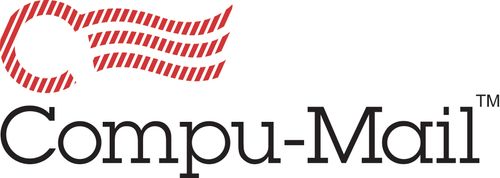As summer came to an end, I found myself traveling for work and wearing a variety of hats at a variety of events. I went from presenting at the YNPN Leaders Institute, attending INBOUND 19, and finally sponsoring the fall NEMOA conference in a matter of a few weeks.
Each conference was its own incredible learning opportunity packed with distinguished speakers and interesting topics. While I could probably fill an entire eBook with what I learned, I decided to try to narrow it down to a few points per conference.
Here are 10 takeaways from a month’s worth of conferences:
YNPN National Conference
Takeaway #1: Communicate on your customer’s terms.
One common thread of the weekend was communication, and the importance of communicating with people on their own terms. This came up in discussion of how YNPN Chapter Leaders prefer to communicate. While a Google group was the current method of group communication, most people agreed that Slack and other co-working platforms were actually better for more efficient and timely communication.
When you think about this in terms of marketing, customers have their own preferred methods of communication, and what you think they like might be different from what they actually like. It is important to listen to your customers and meet them where they are by planning coordinated and cohesive omnichannel campaigns that touch them multiple times.
Takeaway #2: Be proactive in your outreach.
YNPN is committed to Equity, Diversity, and Inclusion (EDI), and for this organization, being proactive means being intentional in event planning, member outreach and engagement, and advocacy efforts in ways that align with their EDI policy and fosters a welcoming and inclusive environment for all.
It is equally important for marketers to be proactive in finding ways to market their organizations in ways that align with their own missions, visions, and core beliefs, resulting in authentic messaging that resonates with their audience.
Takeway #3: “It’s too important not to do the work.”
YNPN’s commitment to EDI and advocacy guides everything they do, and while it can be challenging to find the resources and capital, the bottom line is that the work is too important not to be done. This mindset allows them to be creative in their approach to find the resources they need. This can apply to marketers with small budgets or departments as well – when things like data analysis seem too expensive and might be more “nice to have” then a definite need, when you think about the impact that relevant data and messaging has on the consumer, you realize that it really is too important not to do the work.
INBOUND
“You can’t have boundaries unless you know what your priorities are.” -Elizabeth Gilbert
Elizabeth Gilbert is one of my favorite authors. When describing how she made the commitment to writing, she talked about a mentor that told her about the importance of boundaries and setting priorities. If you want to accomplish something as challenging as writing a book, it is important to think about which activities will help get you there, and which will hold you back.
In terms of marketing, if you do find yourself faced with a lack of resources, it can be easy to get caught up in the little things like short-term revenue drivers, and harder to take a step back and focus on the bigger picture, like the overall revenue impact of campaigns on your business. Taking a moment to determine what is actually important to you and your business will help you frame your boundaries around the right priorities.
“When the end of something becomes visible, we kick harder.” -Daniel Pink
Daniel Pink is another one of my favorite authors. In his session, he talks about the impact that timing has on our productivity, and how often times it is easier to get through something when the end is in sight. For marketers, establishing clear campaign goals and end dates makes it easier to stay focused on track during the entirety of a campaign, rather than losing steam halfway through.
“Sell through your customers, not to your customers.” -HubSpot team
During HubSpot’s own keynote, the team mentioned the importance of selling through your customers, not just to them. Word of mouth and social proof have always been important selling tools. Going back to the idea of being proactive, finding ways to work with your customers such as allowing them ways to review your products or services, encouraging them to share photos and videos of them using your products and services, rewarding them for referrals, etc. all works toward the idea of equipping them with the tools they need to sell to their friends and family for you. It also establishes a stronger connection with them, for a stronger overall relationship.
Fall NEMOA
Statistics
- Gen Z is 2x more likely to use online-only store or brand website – Epsilon Study
- One of the top personalization mistakes brands make is “trying to sell me things I already own.” – Infogroup Study
- Personalization is most “critical” to millennials. – Infogroup Study
Millennials and Gen Z are huge targets for marketers these days. In order to reach them, you must be using personalization and you must be doing so effectively to have the greatest impact.
Main Takeway
Throughout all three conferences, I found one common thread: meaningful and relevant storytelling. In order to create messaging that resonates with your audience, there has to be a story behind it.
It is no longer enough to create generic messages and send them out to everyone. You must be looking for ways to make them personal and relevant to connect with your audience and build a relationship with them.
If you are looking to get started with storytelling, you can check out this eGuide that was adapted from Compu-Mail sales representative Michael Oliver’s presentation at YNPN Greater Bflo event earlier this year.





